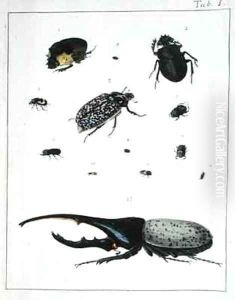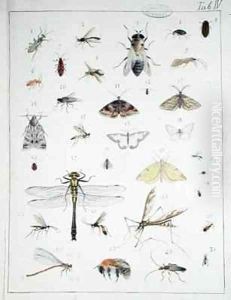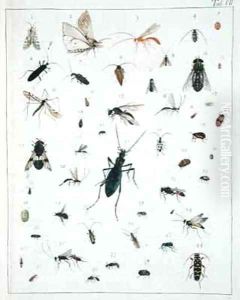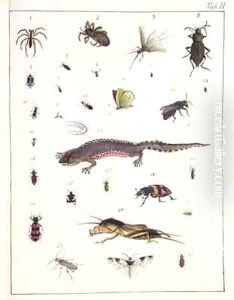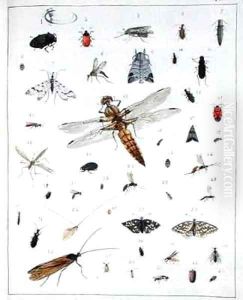Georges Cuvier Paintings
Georges Cuvier, born on August 23, 1769, in Montbéliard, France, was not an artist in the traditional sense but a renowned naturalist and zoologist. He is considered one of the founding figures of paleontology for his work in classifying animals and understanding their anatomy in relation to their fossil records.
Cuvier was educated at the Academy of Caroline in Stuttgart, Germany, and later moved to Paris, where he became a professor at the Collège de France and an influential member of the French Academy of Sciences. His research and findings played a crucial role in the development of comparative anatomy and paleontology. Cuvier established the concept of extinction as a scientific fact, countering the prevailing belief that animal species were eternal and unchanging.
One of Cuvier's significant contributions was his study of the strata of the Earth's crust, which helped him to establish a chronology of the history of life on Earth. He proposed that the Earth had experienced several 'revolutions', or catastrophic events, which had caused the extinctions observed in the fossil record. This theory opposed the uniformitarian view of Earth's history, which suggested gradual changes over time.
Cuvier's work laid the groundwork for Charles Darwin's theory of evolution, although Cuvier himself did not believe in the idea of species evolving into others. He was a proponent of the fixity of species and argued against early evolutionary theories. Despite this, his work on the relationship between living animals and their fossil counterparts was essential to the advancement of biological science.
Georges Cuvier passed away on May 13, 1832, in Paris. His legacy lives on in the fields he helped establish and through the Cuvierian Principle of the correlation of parts, which posits that organisms are so well coordinated that by examining a single part of an animal, one can deduce the whole animal's form. His influence extended beyond science, affecting the way humanity perceives its place in the history of life on Earth.
